The West of Bali is no less charming than the more famous, vibrant parts of the island that are well advertised. What makes this part of the island unforgettable? First of all, your quest to the west begins with a vast rolling paddy terrace that starts from the higher ground down to the beach where the black sand sparks under the glistening sunlight.
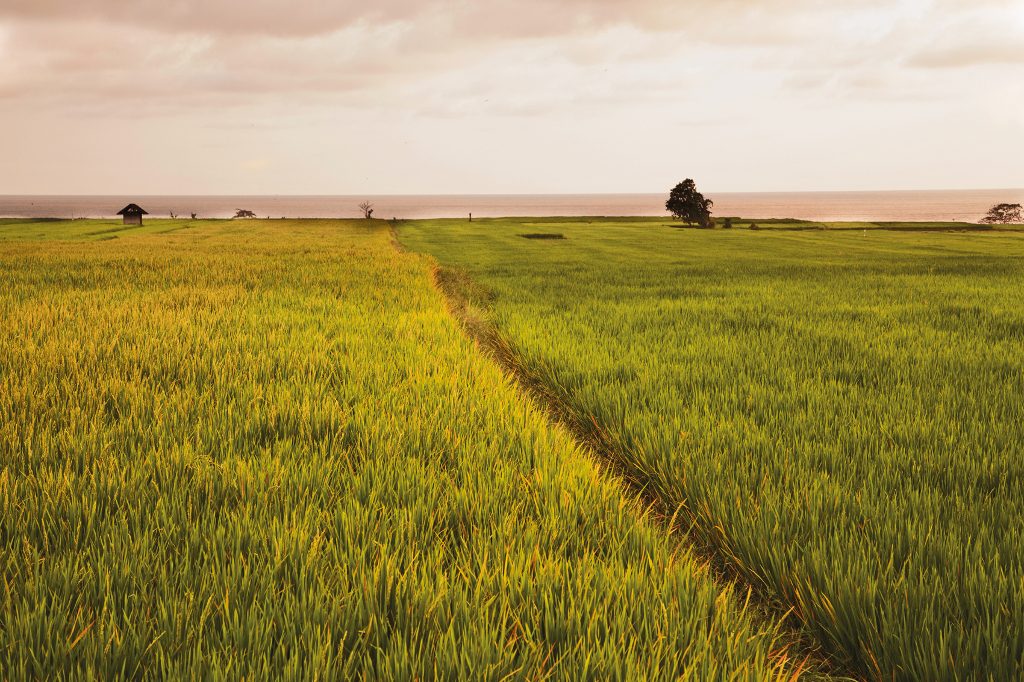
For many months of the year farmers nurture their paddy fields with a great hope of successful harvest, while we, the onlookers, are blessed with massive green views along our journey. This is the kind of scenery you can expect if you drive along the western coast during the months of March and April. The rice fields in LalangLinggah village turn golden as the paddies bow down, heavy with grains, in June or July. During those days, when the sky blushes in golden orange and bright amber and as the sun descends, the landscape and the sky, as if enveloped with shimmering gold, simply flatter each other.
Maybe not so many people are aware of Lalang Linggah Village in the Tabanan Regency, but almost all surfers who come to Bali probably have heard about the magic waves of Balian Beach. The rocky and black sand beach is named after the Balian River as the beach is the estuary of the river. April to August is the best season to surf the powerful waves and long swells of Balian beach, as the dry season complements with the wind flows from the East to the West.
Crossing the border to Jembrana Regency, another rocky beach is also a famous surfing spot, Medewi Beach. The beach offers panoramic views and serenity for those who don’t surf. But for surfers, the spot is suitable for beginner surfers up to professionals, offering long swells and fat waves. During low tide, you can explore the beach and find natural rock pools. While as the sun goes down, you’ll be amazed to see how beautiful and peaceful the sunset in Medewi is, where in the sea a group of fishermen boats slowly disappear to the horizon.
Nearby Negara, the capital of Jembrana Regency, there is a sleepy yet interesting fishermans village named Perancak Village. It is situated at the western tip of the island at the mouth of Perancak River and backed by the Indian Ocean. Its large bay thriving with mangrove forests, an estuary as large as 177ha is dominated by six different mangrove species. The village mostly springs to life every afternoon, and the bay gets busy with dozens of fishermen getting ready for night fishing. The fishing village is a classic and timeless sight with sweet blends of colourful traditional style wooden boats backed with glowing bright amber skies and dozens of people in between. The busier the beach, the more dramatic it gets. However, it is not the only reason for photographers to visit the regency.
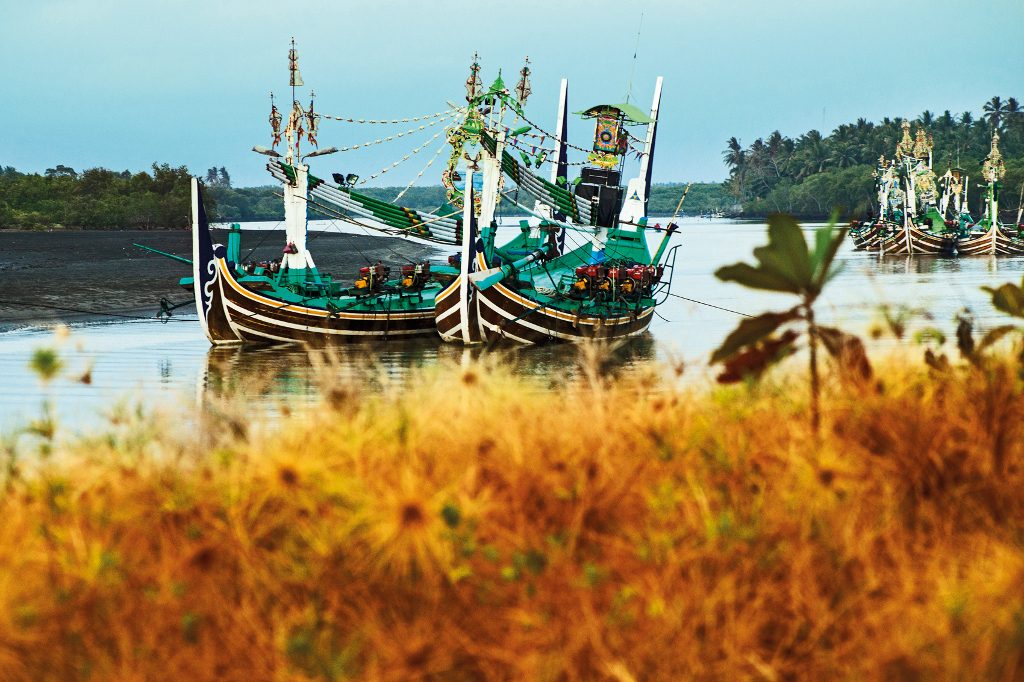
Every year, starting from July to November, the Jembrana Regency holds its major event, which is Makepung. It is buffalo race, where a dozen pair of buffalos and their jockeys go head to head to win the regency cup and the Governor Cup. This tradition is the acculturation of Madurese and Balinese traditions, since most of the fishermen in the regency are descendants of the Madurese. A thousand years ago the sea brought their ancestors to Bali. They brought their heritage and traditions with them, and it passed from generation to generation.
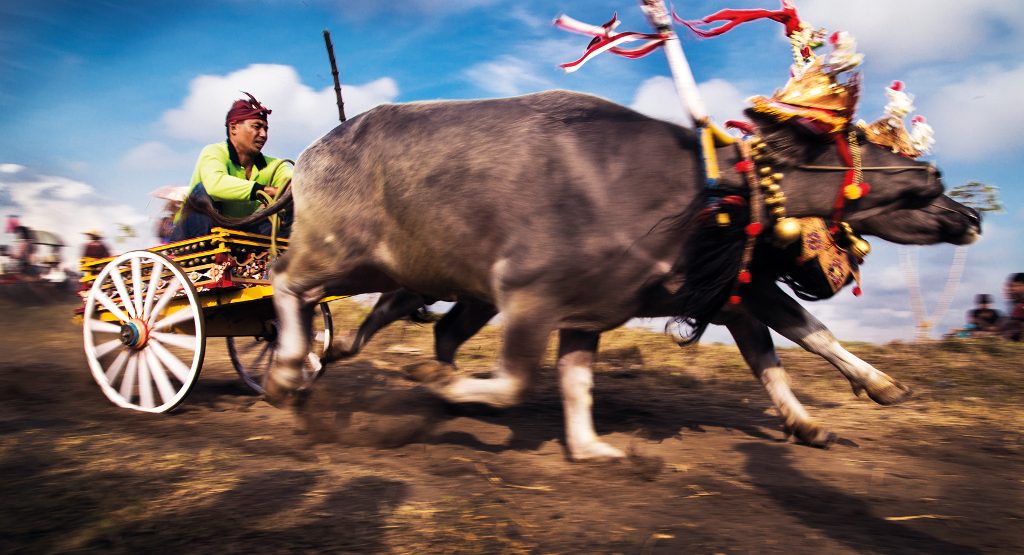
Tentative Schedule of Makepung 2018
– Sunday, 15 July: Delodberawah Village Circuit
– Sunday, 29 July: SanghyangCerik, Tuwed Village Circuit
– Sunday, 12 August: Mertasari. LoloanTimur Circuit (Bupati Cup)
– Sunday, 26 August: Awen, Lelateng Circuit
– Sunday, 9 September: Delodberawah Village Circuit
– Sunday, 23 September: Kaliakah Village Circuit
– Sunday, 7 October: Mertasari. LoloanTimur Circuit
– Sunday, 21 October: PangkungDalem, Kaliakah Village Circuit
– Sunday, 4 November: Delodberawah Village Circuit
– Sunday, 18 November: SanghyangCerik, Tuwed Village Circuit (Jembrana Cup – FINALS)
The jade of the West and the lung of the island is Bali Barat National Park. It is never a boring place to visit. The vast area of the national park sits in two different regencies, half part in Jembrana Regency, while another half is part of Buleleng Regency. The National Park boasts two types of forests, the tropical rainforest and monsoon forest. If you drive from Negara toward Gilimanuk Harbour you’re going to pass through the tropical forest characterised with evergreen trees. Drive north from Gilimanuk Harbour, it is the Northwest part of the park, and you’ll see the different characteristic of the forest, this is the monsoon forest.
This part of the park is the utilisation area where tourism is allowed. Labuan Lalang is the entry point if you want to go trekking, bird watching, or cross the water to the Menjangan Island, a little island where marine life is thriving and the white sand beach is alluring. The park boasts 175 species of plants including the endangered sandalwood, 160 different species of birds, which one of them is Leucopsarrothschildi – the endangered Bali Starling, and other wildlife, such as wild boar, several species of monkeys, and also a deer species locally called Menjangan – Cervustimorensis. Menjangan Island, an uninhabited little island inside the national park, is one of Bali’s famous dive destinations and it offers several different seascapes, from gentle slopes to drop offs, and from shallow dive to deep dive along the wall.
Exploring the West Part of Bali requires a little more time than the East due to distance, though by the end of your adventure you will surely leave with the feeling of calmness and a connection to nature.
WHAT TO DO IN WEST BALI
Bird watchers will find West Bali a piece of paradise, with more than 160 species of bird living in the protected area of the West Bali National Park. The Bali Starling, an elegant little white bird with royal blue feathers around its eyes, is the park’s icon as well as the endemic bird of the area. So listen carefully for their chirping that pierces through the sounds of the wind that rustles the many leaves in order to spot one! Stay quiet as you journey through, as wild life could be anywhere; wild boar, deer and jungle fowl are found within the park’s border. However, stay alert with your surrounding, as it is also home to some poisonous snakes and a large groups of naughty long tail macaques. Leopard cats are also quite common at the park, but seldom sighted.
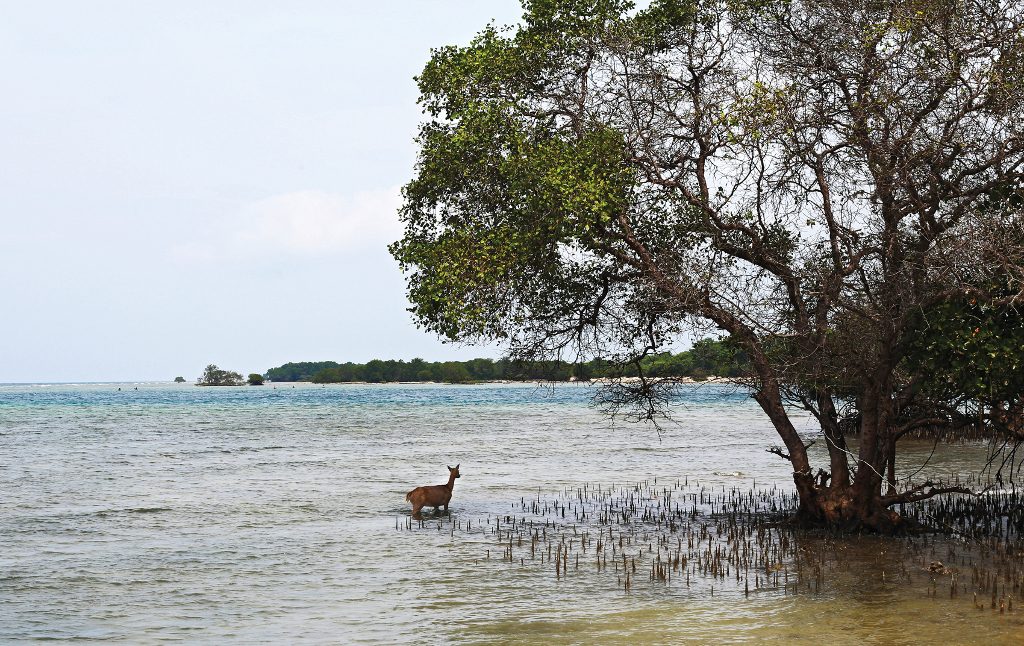
The national park can be explored on foot or by bicycle. A guided tour through the forests however, is an absolute must for those keen to explore! An official tourism office can be found at Labuan Lalang, the main harbour that takes you to Menjangan Island. Along the trail, the guide will share his knowledge about the trees and the vegetation that is seen around you; some of the endemic species are neem trees, sandalwood trees, white-bark acacia trees amongst many others. Trekking with a certified guide as well as having a trekking permit is mandatory here.
Diving is another popular activity here in West Bali. Also part of the national park, Menjangan Island with its pristine water is a popular diving site. The island’s Post 2 is a wall diving site, where dive enthusiasts can admire a wall covered by various types of coral, as well as Gorgonian Sea Fans hanging beautifully from the wall. Here, one may encounter frog fish, sea turtles, black pipe fish, sharks and more. You can also challenge yourself with a deep dive or a drift dive (although currents are relatively mild). If you are lucky you might spot a whale shark as the area is part of their migration route. Don’t know how to dive? The northwestern area is home to bountiful dive centres that offer dive classes to take you on your first breath underwater, blowing bubbles and being weightless while swimming in the ocean.
If being underwater is not something for you, then you can just float on the surface while taking in the beautiful, colourful world beneath you. The visibility is often excellent, and the spectacular explosion of colour will have you in awe of mother nature. Around the island, small sandy bays offer a bit of shade and it’s common to spot the resident menjangan or the Javanrusa or Sunda sambar deer (rusatimorensis) from which the island is named after.
In addition to the dive and snorkelling costs (equipment rentals and/or tours from dive centres), when accessing the Menjangan Island each person is required to pay an activity fee of IDR 15,000 for snorkelling or IDR 25,000 for diving, plus insurance at IDR 4,000 per person.
SLEEP IN WEST BALI
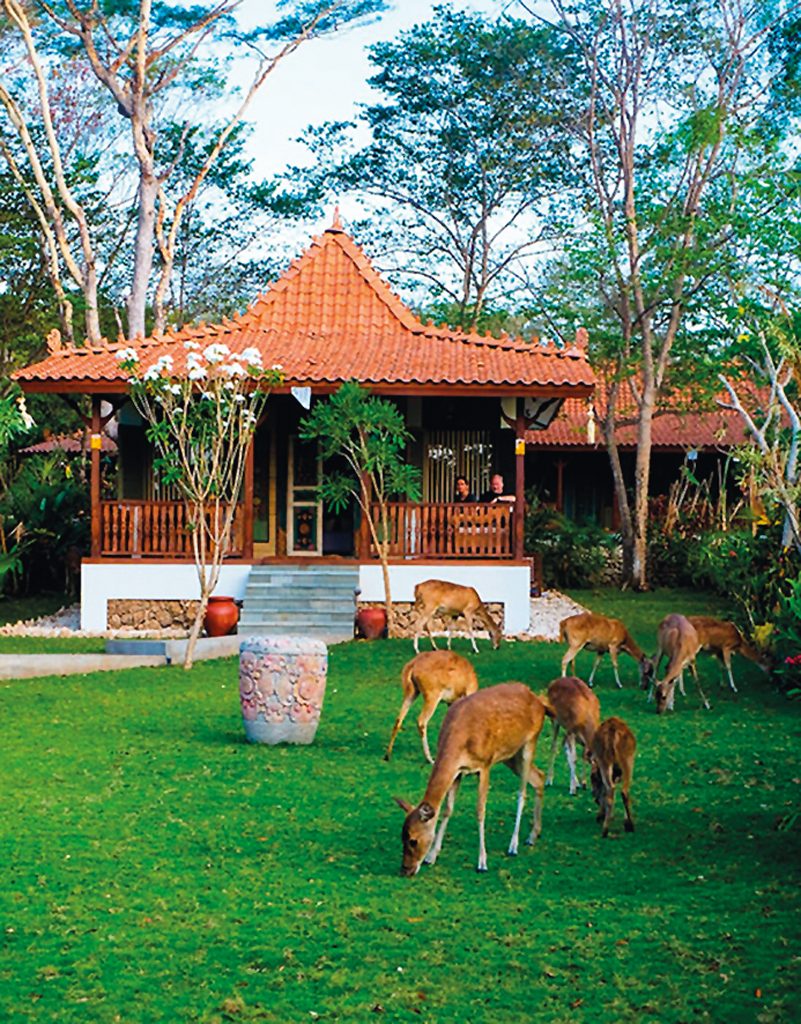
A tranquil hideaway located within the protected sanctuary of West Bali National Park, Plataran Menjangan Resort & Spa offers an escape from the bustling South Bali. Here you get to experience the epitome of luxury, privacy, and comfort in the Plataran’s traditional Joglo villas that are set in the midst of the West Bali forests and by the ocean. You can dine oceanfront, indulging yourself in sumptuous dishes with the freshest of ingredients. Immerse yourself in the song of the exotic Bali Starling as you trek through the jungle. On the water, you can kayak through the mangrove canal, or even dive in crystal clear waters. As the sunset approaches, you can celebrate love through a romantic sunset cruise. Couples, families, and friends are in for an enchanting experience here.
Plataran Menjangan Resort & Spa
Address : Jalan Raya Seririt – Gilimanuk, Gerokgak, Singaraja
Phone : +62 813 3804 4224
Website : www.plataran.com






